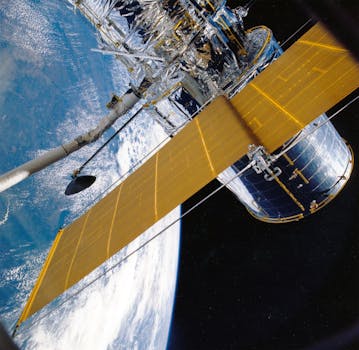From Geostationary to Low Earth Orbit: The Evolution of Satellite Telecommunications in 2023
The satellite telecommunications industry has undergone significant changes in recent years, with a shift from geostationary to low Earth orbit. This article explores the evolution of satellite telecommunications in 2023, including the benefits and challenges of low Earth orbit satellites.

From Geostationary to Low Earth Orbit: The Evolution of Satellite Telecommunications in 2023
Satellite Telecommunications has been a crucial part of the global telecommunications infrastructure for decades, providing connectivity to remote and underserved areas. The industry has undergone significant changes in recent years, with a shift from geostationary to low Earth orbit. In this article, we will explore the evolution of satellite telecommunications in 2023, including the benefits and challenges of low Earth orbit satellites.
Introduction to Satellite Telecommunications
Satellite telecommunications involves the use of satellites in orbit around the Earth to transmit and receive data. The first commercial satellite, Intelsat 1, was launched in 1965 and marked the beginning of the satellite telecommunications industry. Since then, the industry has grown rapidly, with thousands of satellites launched into orbit. Geostationary satellites, which orbit the Earth at an altitude of approximately 36,000 kilometers, have been the dominant technology for many years. However, in recent years, there has been a shift towards low Earth orbit satellites, which orbit the Earth at an altitude of approximately 160-2,000 kilometers.
The Benefits of Low Earth Orbit Satellites
Low Earth orbit satellites have several benefits over geostationary satellites. One of the main advantages is lower latency, which is the time it takes for data to travel from the Earth to the satellite and back. Geostationary satellites have a latency of around 240-280 milliseconds, while low Earth orbit satellites have a latency of around 20-30 milliseconds. This makes low Earth orbit satellites more suitable for applications that require real-time communication, such as video conferencing and online gaming. Another benefit of low Earth orbit satellites is that they require less power to transmit data, which makes them more energy-efficient and cost-effective.
Challenges of Low Earth Orbit Satellites
Despite the benefits of low Earth orbit satellites, there are also several challenges associated with this technology. One of the main challenges is the need for a large constellation of satellites to provide global coverage. This can be expensive and logistically challenging, as it requires the launch of many satellites into orbit. Another challenge is the risk of collisions between satellites, which can cause significant damage and even lead to the loss of satellites. Additionally, low Earth orbit satellites have a shorter lifespan than geostationary satellites, which can range from 5-10 years, compared to 15-20 years for geostationary satellites.
Conclusion
In conclusion, the satellite telecommunications industry has undergone significant changes in recent years, with a shift from geostationary to low Earth orbit. Low Earth orbit satellites have several benefits, including lower latency and energy efficiency, but also pose several challenges, such as the need for a large constellation of satellites and the risk of collisions. As the industry continues to evolve, it is likely that we will see the development of new technologies and innovations that address these challenges and unlock the full potential of satellite telecommunications.



